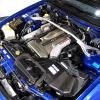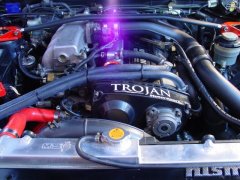How Many Of You Use An Aftermarket Ecu And If So,what Make?
Announcements
-
Similar Content
-
Latest Posts
-
@Duncan a meter will read continuity, so long as resistance is below a certain threshold. For example, on a headlight globe, you'll probably manage to get your MM to beep for continuity. I always go with measuring resistance. I've had some digital Multimeters beep continuity even with a 100ohm load. Now as for that wire that should be undamaged earthing out... I really really don't want to say it, as I hope it's not the case... Do you happen to have any evidence of mice/rats around?
-
This is a dc2r lip No modifications required. Installation is fairly easy but you have to screw the middle for it to sit where you want it https://www.ausbodyworks.com.au/products/silvia-s15-dc2r-front-bumper-lip Is the website I bought it from
-
Sick! This is exactly what I was looking to achieve. How'd you go about installing it? What modifications we're required?
-
nah the heater hoses are fine, I just use the dump pipe as a booster until the coolant warms up
-
You don't think he should leave it to torch the heat hoses?
-





Recommended Posts
Create an account or sign in to comment
You need to be a member in order to leave a comment
Create an account
Sign up for a new account in our community. It's easy!
Register a new accountSign in
Already have an account? Sign in here.
Sign In Now